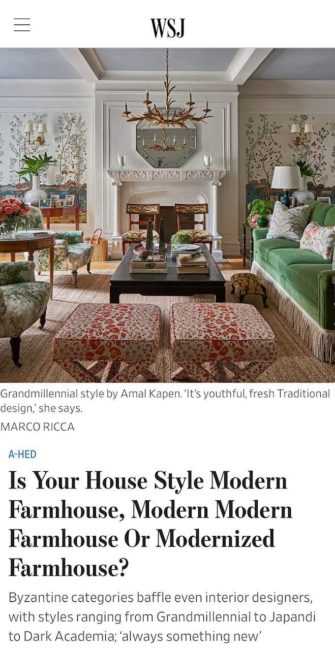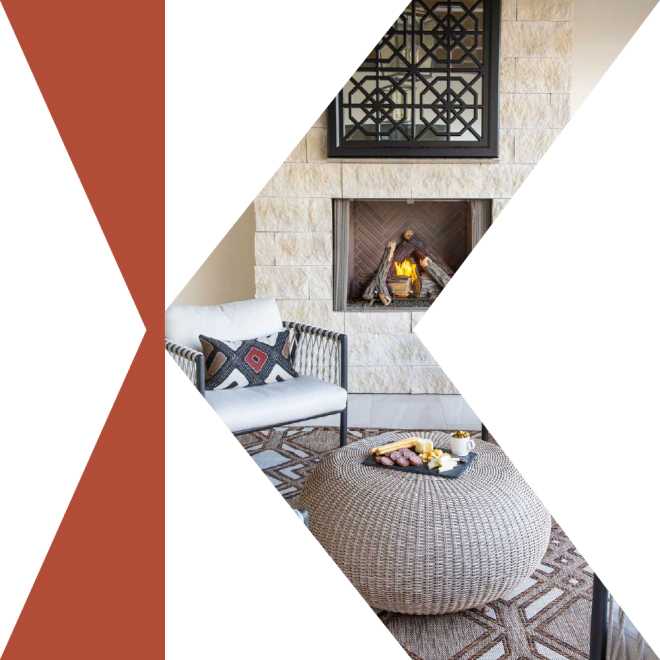There is nothing like and email from Jessica Flint at the Wall Street Journal telling you that the interior design story she interviewed you for is going to land on the front page of the weekend issue! While I may have only had a sentence featured in her report, I was honored to be featured with several talented interior designers discussing “Is Your House Style Modern Farmhouse, Modern Modern Farmhouse or Modernized Farmhouse?”

When we are interviewed by reporters, we typically jump on a phone call together to get the best sense of what the reporter wants to cover. Personally, I never show up cold—I typically get my thoughts outlined in an email with even the smallest shred of knowledge as to where the interview may go. For this particular conversation, I had the following prepared.
There seems to be confusing subgroups within these styles: Farmhouse is similar to Modern Farmhouse which is similar to Organic Modern which is similar to Japandi.
There will always be those over-arching styles that clients take inspiration from—it is great to understand that larger design style as it can serve as your interior or exterior “design anchor”. It can be the place where all room concepts flow from, creating a cohesive yet interesting and personal aesthetic for the home. So if you know you are drawn to Farmhouse style but want to keep finishes clean and simple versus rustic and reclaimed, you may lean more Modern Farmhouse. If you want to soften the more sleek style but maintain those low-maintenance finishes, you may bring in more wood grain and handmade tiles creating an Organic Modern interior.
I’m hoping to speak with an expert who can give me insight on why lately there seems to be so many new interior design styles and confusing subgroups. Are these really new styles? Or are these just clever words that are referring to styles that have been around forever?
We all know history repeats itself and I think that is especially true in interior design. The pandemic not only caused global supply chain issues, but it caused people to really take a hard look at their homes and how they were living. Some residents were challenged financially and got creative using what they had on hand in the attic or by recovering and repurposing pieces (hello Cottage Core and even Maximalism), while others found vintage pieces from consignment stores due to the challenges of getting fresh new pieces online paired with a need for something that felt authentic (in comes Grandmilennial). While for us, still other clients who did had big budgets and big vision decided to start all over again building new homes, renovating and remodeling, making styles like Modern Farmhouse and more colorful and organic concepts their own.
Regardless of the style a homeowner uses to express themselves, there should always be a flow from room to room and the whole design should have a common thread versus a whole new design concept every time one enters a room. At the end of the day, I believe what you are seeing with these “newer design styles” popping-up is the desire for people to express themselves, dabbling with interior elements to find their “interior design voice” in their home just as they have in fashion and that is a good thing.

And then paired it with the knowledge of our team at the American Society of Interior Designers (ASID) and our most recent trend reports. After a 30-minute conversation and a couple of emails, this is the quote that shook out for the article: The bloating of interior-design lexicon is a hot-button subject, says Kerrie Kelly, past chair to the national board for the American Society of Interior Designers. “Just like a house has layers, there are layers to this conversation,” says Ms. Kelly, an interior designer in Sacramento, Calif.
You never know what may stick and what may end up on the cutting room floor—regardless, I am so happy to have been included in this conversation!

